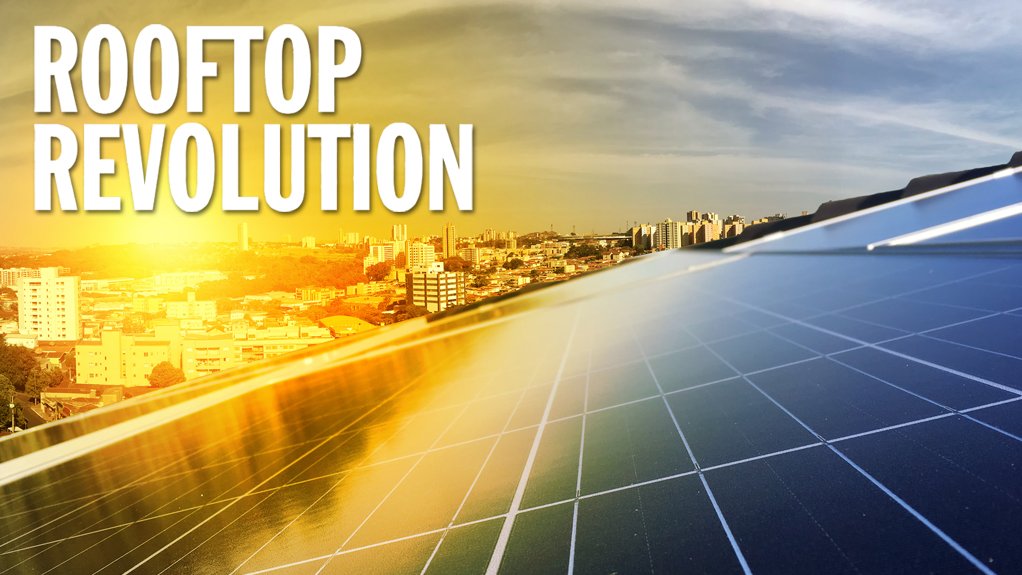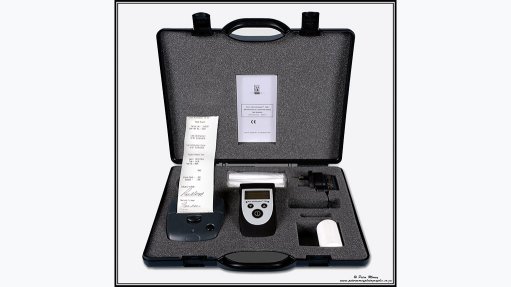Firms and households tap rooftop power as load-shedding risk lingers
Improving technologies, which reduce deployment costs, as well as lower tariffs and thousands of hours of sunshine every year, along with the continued challenges of State-owned power utility Eskom’s load-shedding, will likely drive more citizens and businesses to adopt solar photovoltaic (PV) systems to meet their electricity consumption needs.
Despite the prevalence of some barriers – including municipal capacity constraints, processes, policies and regulations and illicit operators, as well as the upfront costs needed to deploy solar-based power systems – that hamper the acceleration of the sectors’ growth, adoption of solar PV technology is on the rise.
The South African Photovoltaic Industry Association (Sapvia) has reported significant growth in the distributed generation market segment, with a large increase in the number of players in the market as well as the installed capacity.
“We have seen tremendous growth over the last three years. The market has grown from 200 MW to an estimated 2 GW of installed capacity currently. We have also seen this growth in our membership, increasing from 130-odd members three years ago to 544 members currently. About 60% of that is attributed to the small-scale embedded generation or distributed generation, including commercial and industrial,” says Sapvia COO Niveshen Govender.
In particular, there has been a significant uptick in residential solar PV alongside the commercial and industrial applications.
“With the low tariffs and rapid build times, solar PV remains the technology of choice in meeting the country’s electricity requirements,” he says.
Owing to the declining costs of solar power and associated systems for many consumer groups, it is becoming preferable to produce electricity through PV on rooftops instead of buying it from Eskom or municipalities.
Further, rooftop solar offers the benefits of modern electricity services to households that previously had no access to electricity.
According to GreenCape’s Energy Services 2021 market intelligence report, rooftop generation has been a significant contributor to the growth of solar energy in South Africa.
The report estimates a total of 1.15 GWp of installed solar PV rooftop systems throughout South Africa, with between 250 MWp and 400 MWp of rooftop solar PV having been installed in the last 12 months.
The total yearly available market could continue to grow at this rate to a saturation point of about 500 MWp installed a year, potentially reaching a total of 7.5 GW of installed capacity by 2035.
The commercial and industrial sector presents the largest near-term opportunity in this sector, accounting for about 70% of new rooftop solar PV installations nationally.
Market intelligence and advisory firm Mordor Intelligence shows similar forecasts of significant growth in the rooftop segment from 2021 to 2026.
The South Africa Solar Photovoltaic Market: Growth, Trends, Covid-19 Impact and Forecasts 2021 to 2026 report indicates that, while utility-scale solar PV projects have gained a significant share in the market studied, small-scale rooftop solar PV systems represent an important part of the market, revolutionising the energy system in South Africa, as it is technically and economically feasible to install more than 11 GW of solar PV on residential rooftops in the metropolitan municipalities of South Africa by 2030.
“South Africa is an ideal country for solar,” says Council for Scientific and Industrial Research (CSIR) Solar PV principal researcher Lawrence Pratt, noting the vast availability of solar resources in the country and, with the cost for solar PV reducing and grid-linked electricity costs rising, the opportunity for PV is going to continue to grow.
A recent Western Cape GIZ/CSIR study, sampling in a small coastal area that does not have the significant level of solar resources of inland South Africa, revealed optimistic outcomes and opportunity for the future of rooftop solar.
A review of seven municipalities within the Garden Route District Municipality found a nearly 2 GW potential from rooftop space alone in the region.
“We found about 1.75 GW of usable space on residential, industrial and commercial in that area and in the residential sector; relatively speaking, there is essentially enough rooftop on the homes to produce three times as much power as the homes actually use.”
The study, which formed part of a bigger study for the Municipal Electricity Master Plan for possible electricity futures for the region, aimed to determine technical potential based on available rooftops, ascertain the business case for rooftop PV and estimate the adoption rate, the latter two of which are still works in progress.
Such an outcome holds promise for the sector should it overcome the challenges and barriers currently faced.
Govender says one of the greatest challenges, in addition to regulations and policies, is the municipal capacity to allow for small-scale embedded generation.
Many municipalities, particularly the smaller ones, do not have the application and commissioning processes capacity, or the technical know-how of how these systems need to be integrated into the distribution system. Further, with changing tariff types when moving from a standard electricity tariff to a type-of-use tariff, there is strained capability in integrating the system from a financial point of view.
In line with this, Sapvia has a municipal support programme run by Sustainable Energy Africa and funded and supported by the GIZ.
“Through the programme, we have taken some 50 municipalities through this process. We created templates, processes and application forms and all the tools required to implement the processes and taking the municipalities through training.”
Further, according to the International Trade Administration, the rapid uptake of solar PV over the past three years has caught national regulators by surprise and has highlighted the need for new national policies and regulations to guide and regulate the solar PV market.
“There is a lot of uncertainty around what processes need to be followed, depending on where you live. That was a bottleneck in the US for a long time,” says Pratt, noting that there is a need to simplify the process and make it more transparent.
Govender notes that many projects are on a project-by-project basis as installers navigate the processes and procedures required for the deployment of solar energy.
There is also a need for policy and regulation to govern the safe uptake of solar PV and Sapvia is working with stakeholders to ensure the process is more transparent, efficient and user-friendly.
“One of the programmes we implemented is the PV GreenCard programme, which looks at quality and safety mechanisms,” says Govender, noting that thousands of candidates and more than 450 companies have worked through the programme as Sapvia works to create a controlled, regulated environment.
The programme, which focuses on education, skills development and training to build installer capacity, also aims to improve standards development and compliance in line with international best practice.
Sapvia has also been working to implement standardisation with the South African Bureau of Standards.
Solar PV has reached the point where it will no longer serve just as backup for power, with the pricing structure competing with national grid tariffs.
In five years, with the likely introduction of battery storage, it will be cheaper to have solar PV and battery storage sustaining electricity consumption requirements.
“The storage capacity is a huge player here. Reluctance on the part of utilities is not unfounded. If there is no storage, utilities do not see the advantage, but if we can find a way to do the shifting, we can produce what we need for the day and tuck some away for the evening peak or when there is load-shedding,” Pratt adds.
However, quality and reliability are critical for long-term use and to support a transition to a green economy.
Article Enquiry
Email Article
Save Article
Feedback
To advertise email advertising@creamermedia.co.za or click here
Comments
Press Office
Announcements
What's On
Subscribe to improve your user experience...
Option 1 (equivalent of R125 a month):
Receive a weekly copy of Creamer Media's Engineering News & Mining Weekly magazine
(print copy for those in South Africa and e-magazine for those outside of South Africa)
Receive daily email newsletters
Access to full search results
Access archive of magazine back copies
Access to Projects in Progress
Access to ONE Research Report of your choice in PDF format
Option 2 (equivalent of R375 a month):
All benefits from Option 1
PLUS
Access to Creamer Media's Research Channel Africa for ALL Research Reports, in PDF format, on various industrial and mining sectors
including Electricity; Water; Energy Transition; Hydrogen; Roads, Rail and Ports; Coal; Gold; Platinum; Battery Metals; etc.
Already a subscriber?
Forgotten your password?
Receive weekly copy of Creamer Media's Engineering News & Mining Weekly magazine (print copy for those in South Africa and e-magazine for those outside of South Africa)
➕
Recieve daily email newsletters
➕
Access to full search results
➕
Access archive of magazine back copies
➕
Access to Projects in Progress
➕
Access to ONE Research Report of your choice in PDF format
RESEARCH CHANNEL AFRICA
R4500 (equivalent of R375 a month)
SUBSCRIBEAll benefits from Option 1
➕
Access to Creamer Media's Research Channel Africa for ALL Research Reports on various industrial and mining sectors, in PDF format, including on:
Electricity
➕
Water
➕
Energy Transition
➕
Hydrogen
➕
Roads, Rail and Ports
➕
Coal
➕
Gold
➕
Platinum
➕
Battery Metals
➕
etc.
Receive all benefits from Option 1 or Option 2 delivered to numerous people at your company
➕
Multiple User names and Passwords for simultaneous log-ins
➕
Intranet integration access to all in your organisation

















